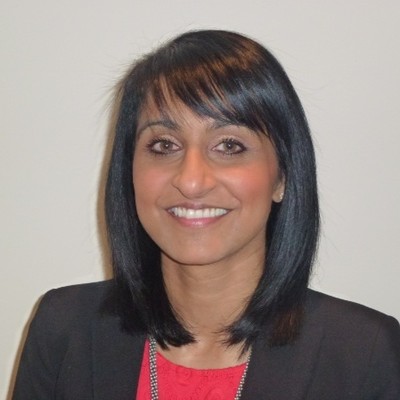The theme for this year’s Mental Health Awareness Week is ‘Community’. At Lawsight we understand and are big advocates for community as we know the positive impact strong connections can have on our mental health and wellbeing. As psychotherapists (with a background in the law) we also recognise the importance of our ‘inner community’. Let us explain…
When I (Satpal) sat down to write this article, I noticed I was feeling conflicted. These conflicts were coming from different parts of me – parts that have developed over time through past experiences. There was the:
– Procrastinating part (who was putting off getting the job done)
– Self-doubting/critical part (“Who will want to read this?”)
– Rebellious part (who wanted ‘play’ rather than work)
– Creative part (who knows how much I enjoy writing, once I start!)
– Confident part (who is encouraging and knows that “I can do this”!)
I can assure you, I do not have a ‘split personality’, but I do have different parts of myself that are akin to an internal community what I call my ‘community of selves’.
How we use (neuro) science to make sense of this…
At Lawsight we have learnt from the field of neuroscience that whilst we might like to think of ourselves as one unified, coherent self, from our experience of working as psychotherapists, we know this is far too simplified a view and does not account for the complexity, nuanced and multifaceted nature of human beings. A US neuroscience researcher and psychotherapist Louis Cozolino has found that the many layers of who we are, correspond with different neural pathways in the brain, which we enlist to meet a wide variety of situations and in the different roles we play1.
This means that rather than functioning as a single self, human neurobiology adaptively favours a community of selves with a diverse set of context-dependent parts and related skill sets. These parts shift in their engagement depending on the physiological, emotional and social factors of a given situation. Rather than viewing this shifting as a sign of failure, think of it more like an under the radar superpower that allows us to adapt to the wide variety of roles we play, from partner to parent to friend to professional.
By evolutionary design, each component part of who we are serves an adaptational purpose. Our emotional parts take the lead in our social interactions and relationships. Our logical parts step up to help us analyse situations and solve problems rationally. Our protective parts handle physical and emotional safety, while our intuitive parts process sensory information in the form of “gut feelings.” Our internal self allows us to reflect deeply on our lives, and our outward self focuses on keeping us engaged with others and our community.
As you can see, each part has a valuable contribution to make. In an ideal world, these parts operate not as a hierarchy, but as branches of a cohesive and collaborative community. We take input from different parts of who we are and combine them in beneficial ways to exhibit balanced decision making. Some days we are better at this than others depending on the kinds of experiences, interactions and pressures we face.
Back to Satpal’s conflicting parts/community of selves…
Once upon a time, my inner community generated confusion and tension within me. Different parts of me were warring with one another, each with their opposing perspectives, needs, desires, fears, and hopes. This would leave me feeling stuck and at times overwhelmed.
As I have gained insight and awareness into the different parts within me, I have come to understand where they come from and why they exist, which has led me to approach them firstly, with curiosity and then with compassion and acceptance rather than frustration. I know that each has a purpose, for example, my inner critic tries to protect me from rejection and encourages perfectionism. I find it helpful to recognise these different responses and pay attention to which parts come out in different contexts.
The boardroom table
Let’s think of these different parts as different team members sitting around a boardroom table – a metaphor that our lawyer clients find particularly helpful. I make sense of these different parts by reflecting on each of them and the role they play. I allow each part to have its voice and validate its emotions and perspectives. If I do not do this, I know it will just get louder as it tries to be heard. Once I have heard from each part, I decide which will serve me best in any given moment. Another way of putting it is “which part should be appointed as ‘Chair’ of the meeting?” In this case it would be the confident part of me as I know she will bring balance to the other voices, enabling me to act in the most constructive way and write this article!
This level of connection, reflection and acknowledgement brings me some relief as I have learnt that these parts can coexist within me, without allowing any single one to dictate. No longer is one part trying to establish itself as ‘right’ and trying to ‘silence’ all others. This feels more collaborative and less warring. These parts can work together rather than in opposition.
You might recognise for yourself when diversity of your component parts create contradictory priorities, resulting in a power struggle that leads to dilemmas like these: “Should I make a decision with my head or my heart?” “Should I go with the safe option or take a chance based on a gut feeling?” In complex situations where we are genuinely torn on which direction to go, it can be very helpful to identify and dig deeper into the primary goals and motivations of each part and attempt to negotiate the most beneficial outcome possible.
Various life experiences, traumas and stresses can also cause these parts of us to manifest in unhelpful ways. We have seen with our clients how this often looks like one part overpowering or shutting down from the others, and psychological symptoms can emerge as a result. For example, if our protective parts become hypervigilant, we experience anxiety symptoms. Excessive introspection can result in depressive symptoms like rumination and negative self-focus. In ADHD, an overactive internal dialogue can inhibit our capacity to be focused and grounded. These are just a few common examples of how many mental and physical health symptoms are the result of unbalanced parts that do not have healthy outlets yet.
The conflict that occurs between the different parts of our self is just a part of being human and it is something that we may experience regularly in our day-to-day lives and at work, such as managing competing priorities, clients, and team members.
Can you identify the parts within your inner community? And do you connect with or favour some over others?
One element of knowing who we are and how to take care of ourselves better includes identifying the component parts of our brains and minds, learning how they operate and connecting with each one for good mental wellbeing.
Therapy can help us bring awareness to the different parts within us as it offers a safe space for reflection and awareness. This can enable us to navigate internal conflicts and tensions to bring greater harmony to our inner community and to our external relationships and the wider community. Using a multi-part framework of the self allows us to give each version of ourselves a healthy form of expression, a process which ultimately leads to greater self-understanding and acceptance.
This article was written by Satpal Kaur- Thompson, a Director at Lawsight in collaboration with her colleague and Co-Director, Claire Jacques at Lawsight. Lawsight are a team of psychotherapists (with a background in the law) who specialise in supporting legal professionals with their mental health and wellbeing. To find out more visit our website.
Further Reading
1 Cozolino, Louis J., author. The Neuroscience of Human Relationships : Attachment and the Developing Social Brain. New York :W.W. Norton & Company, 2014.
 Satpal Kaur-Thompson
Satpal Kaur-Thompson